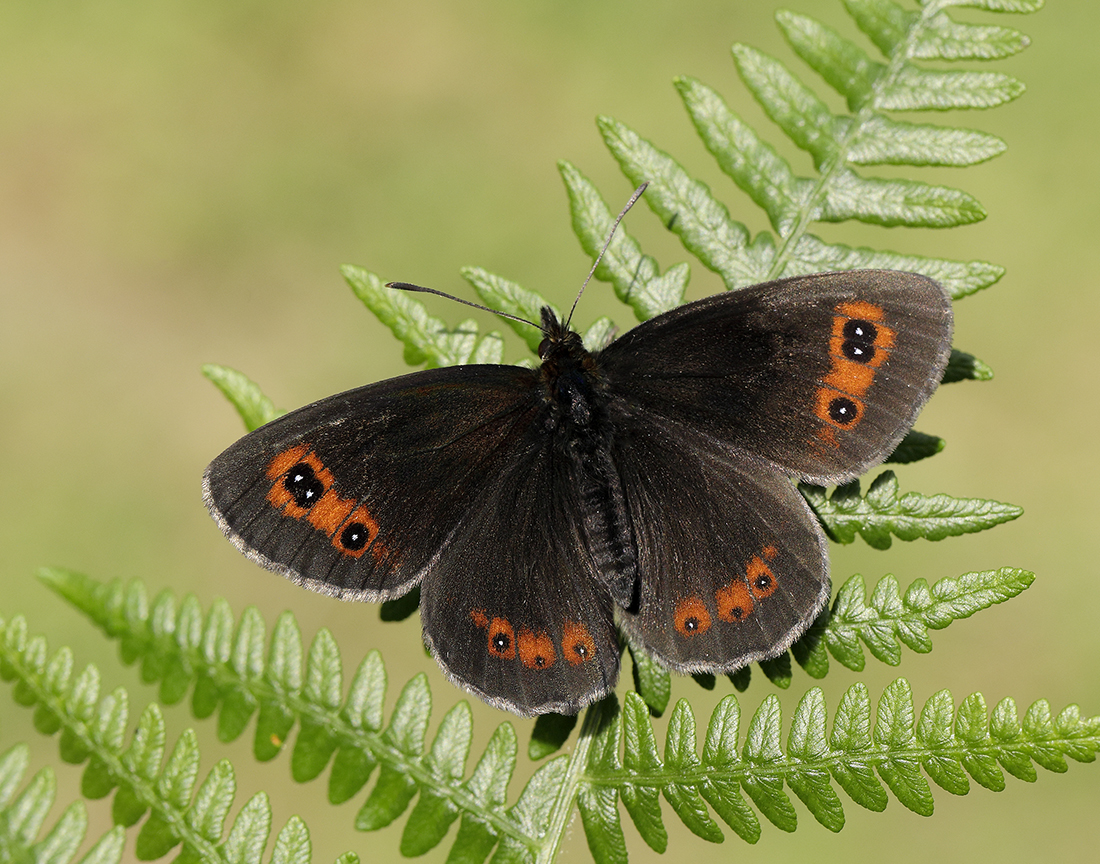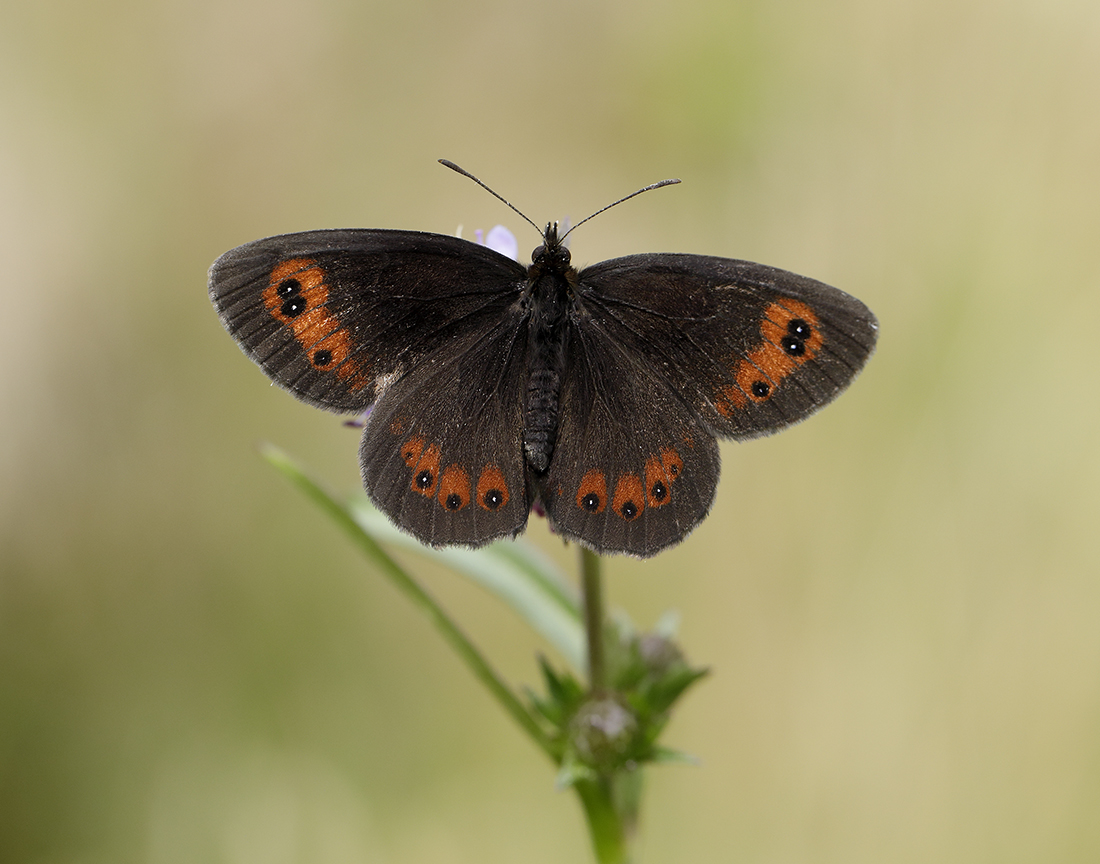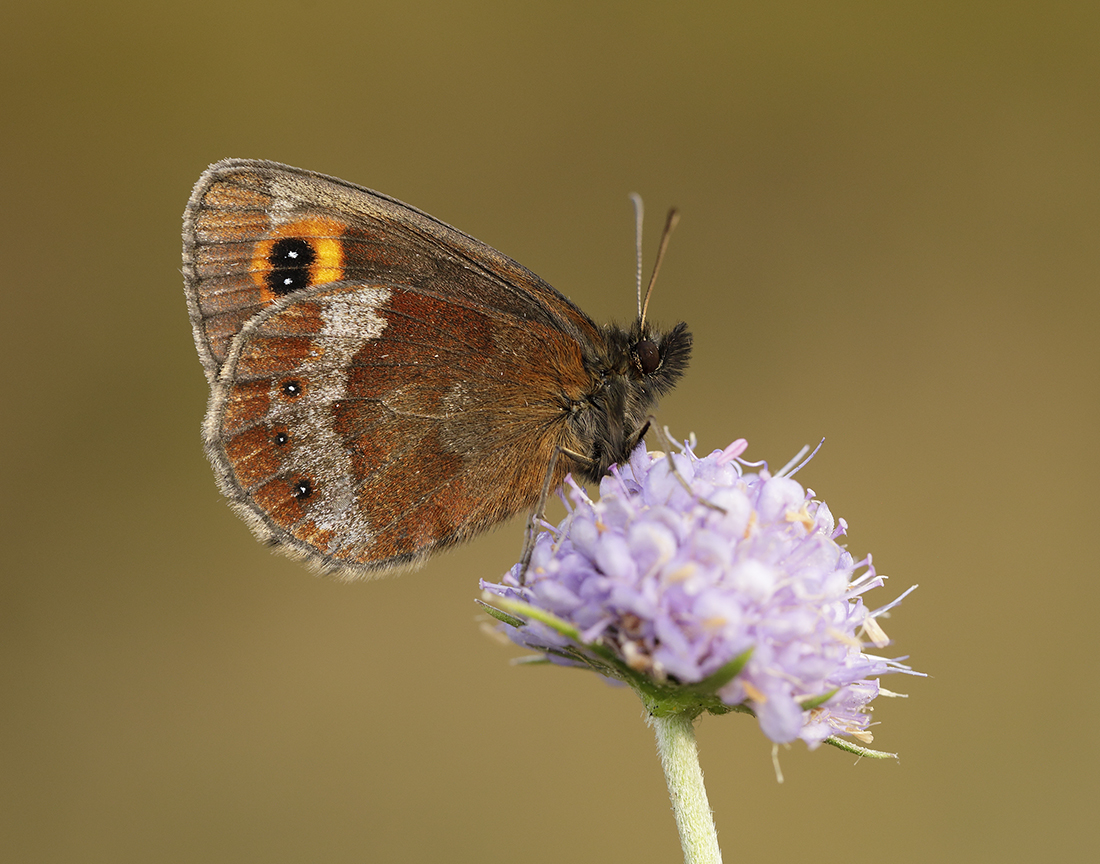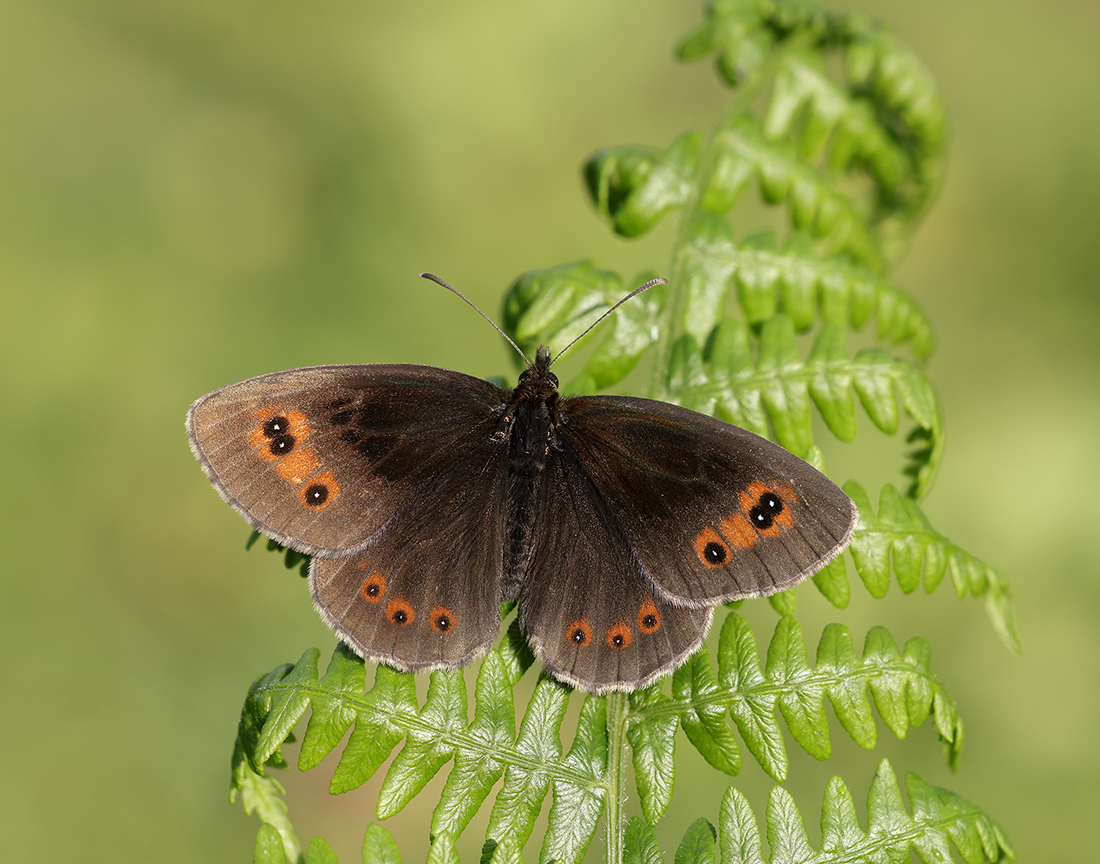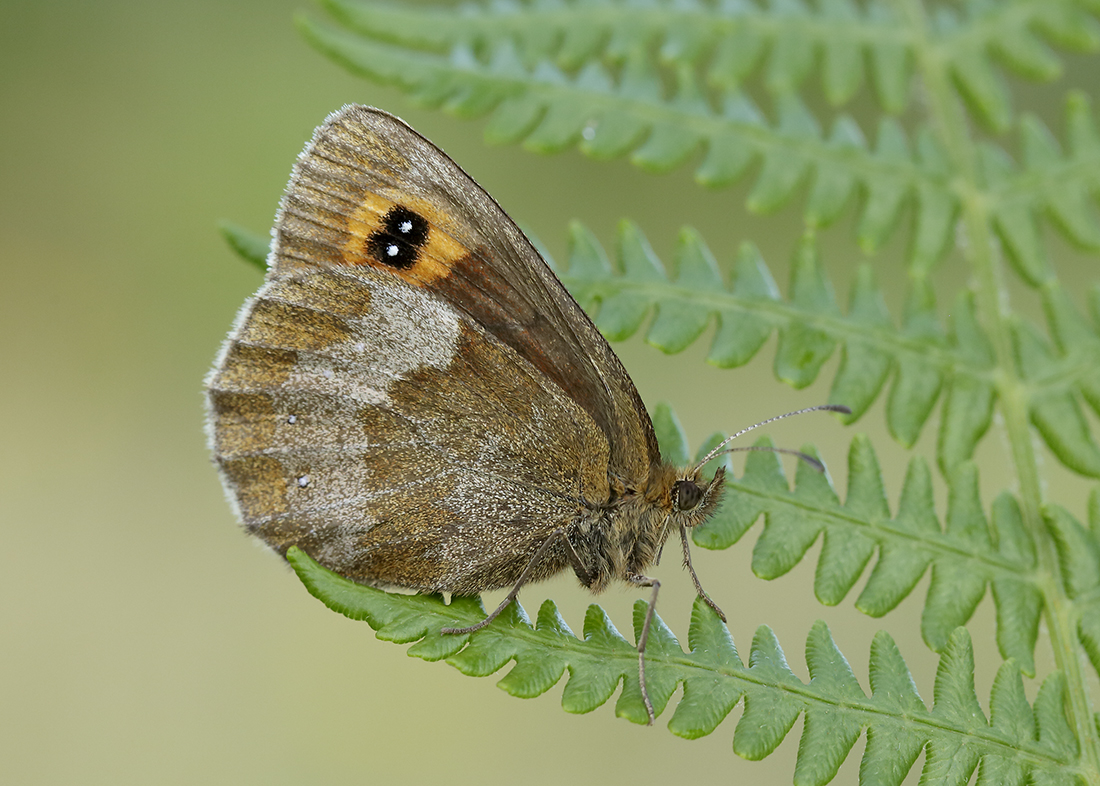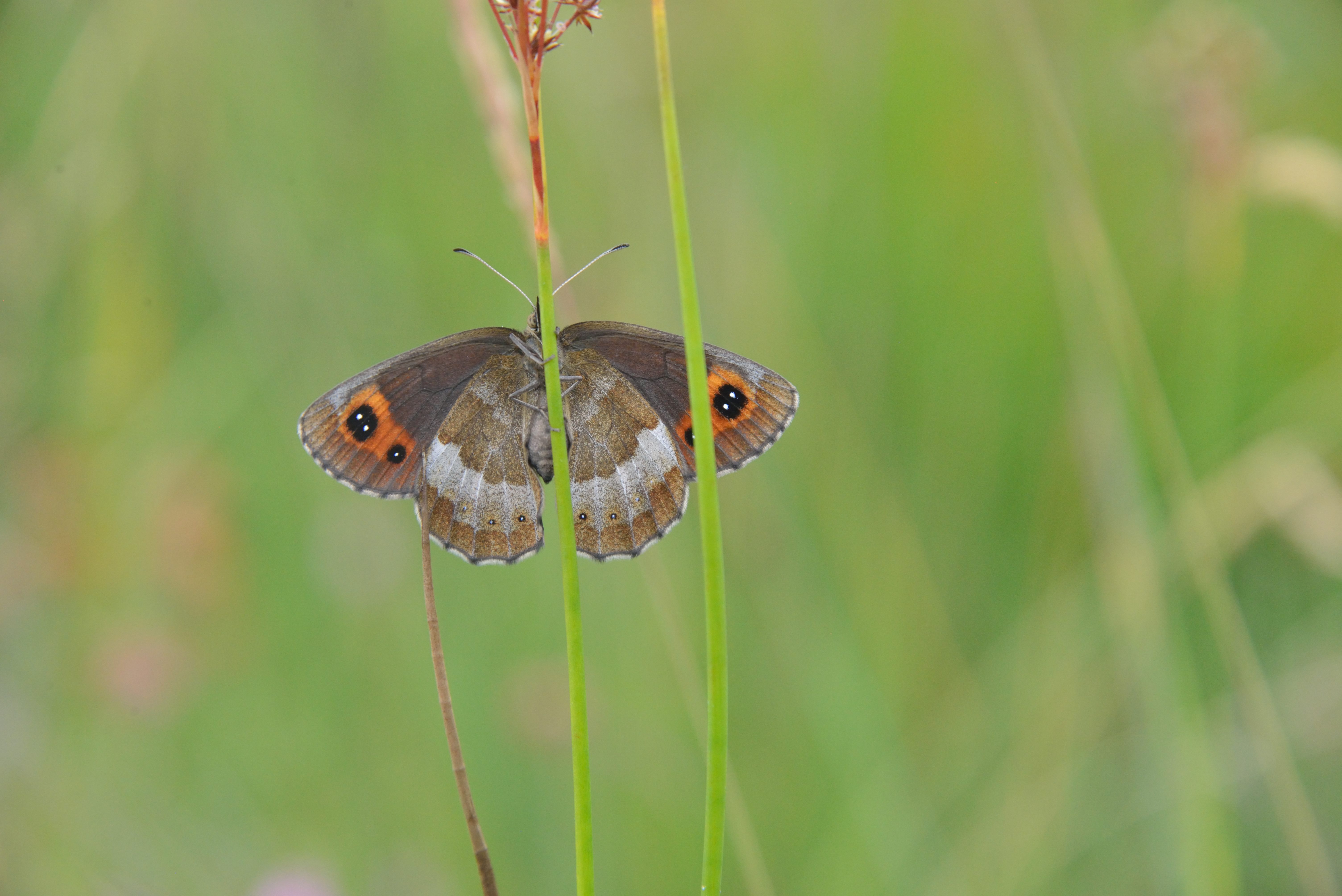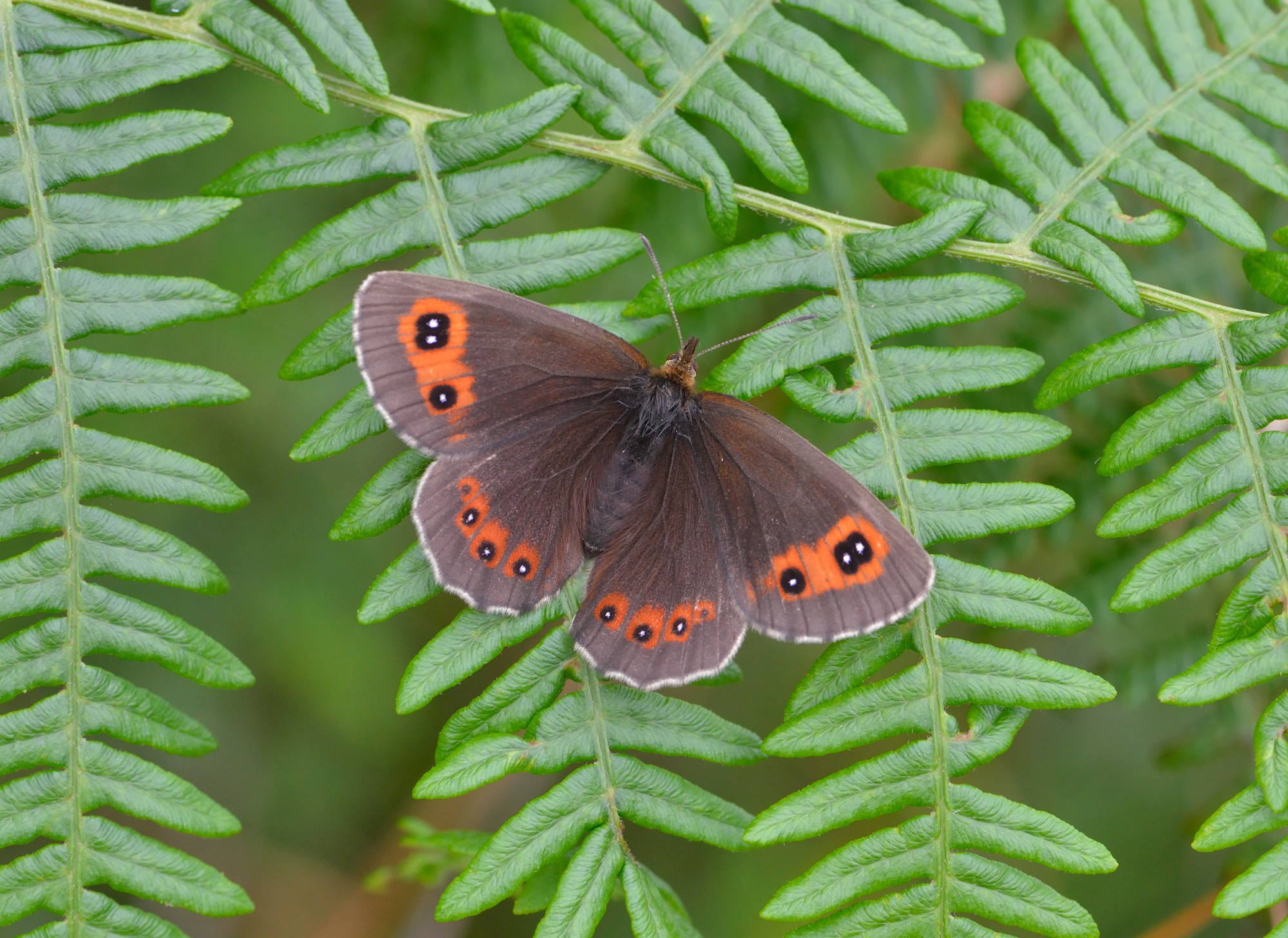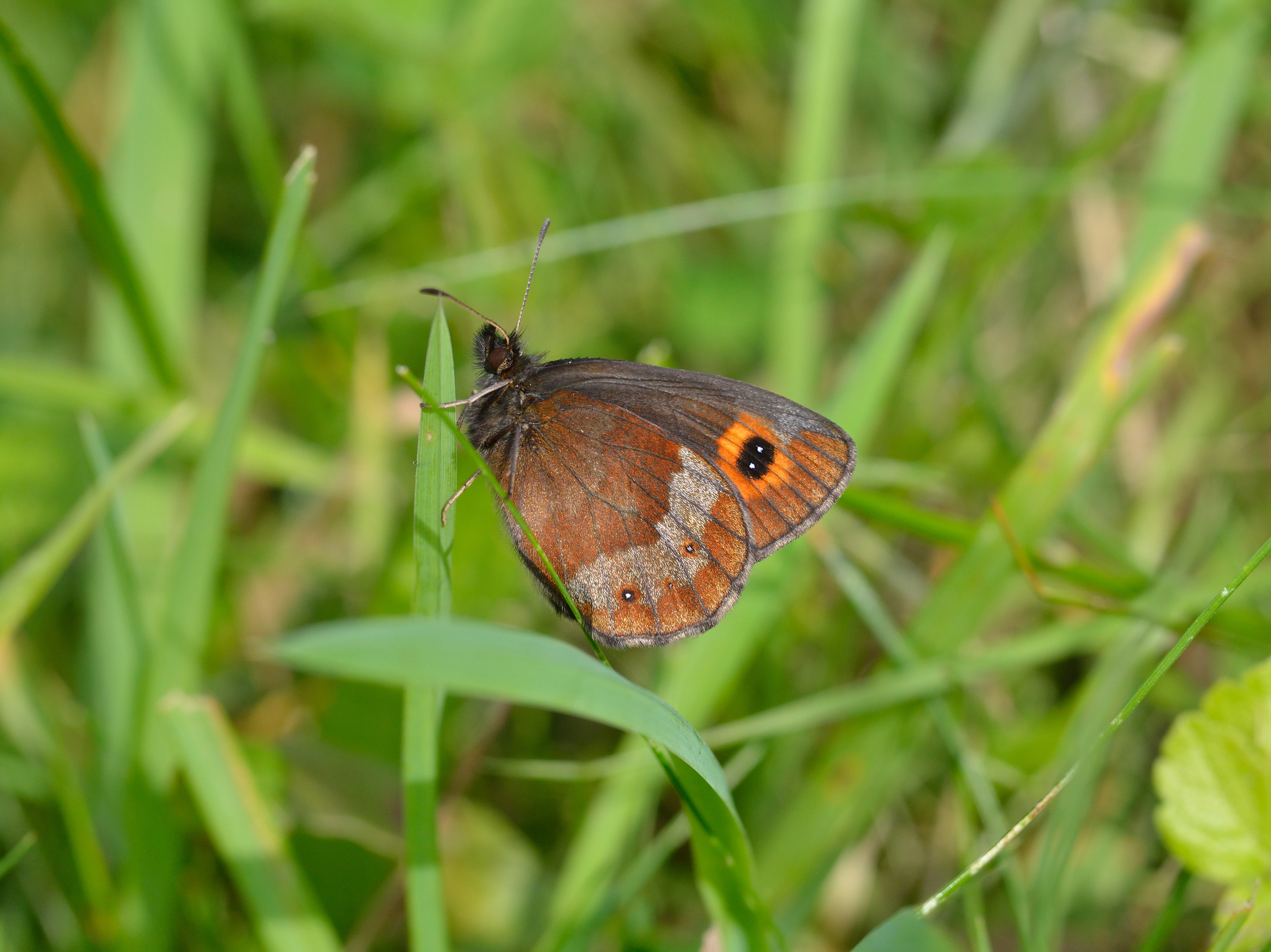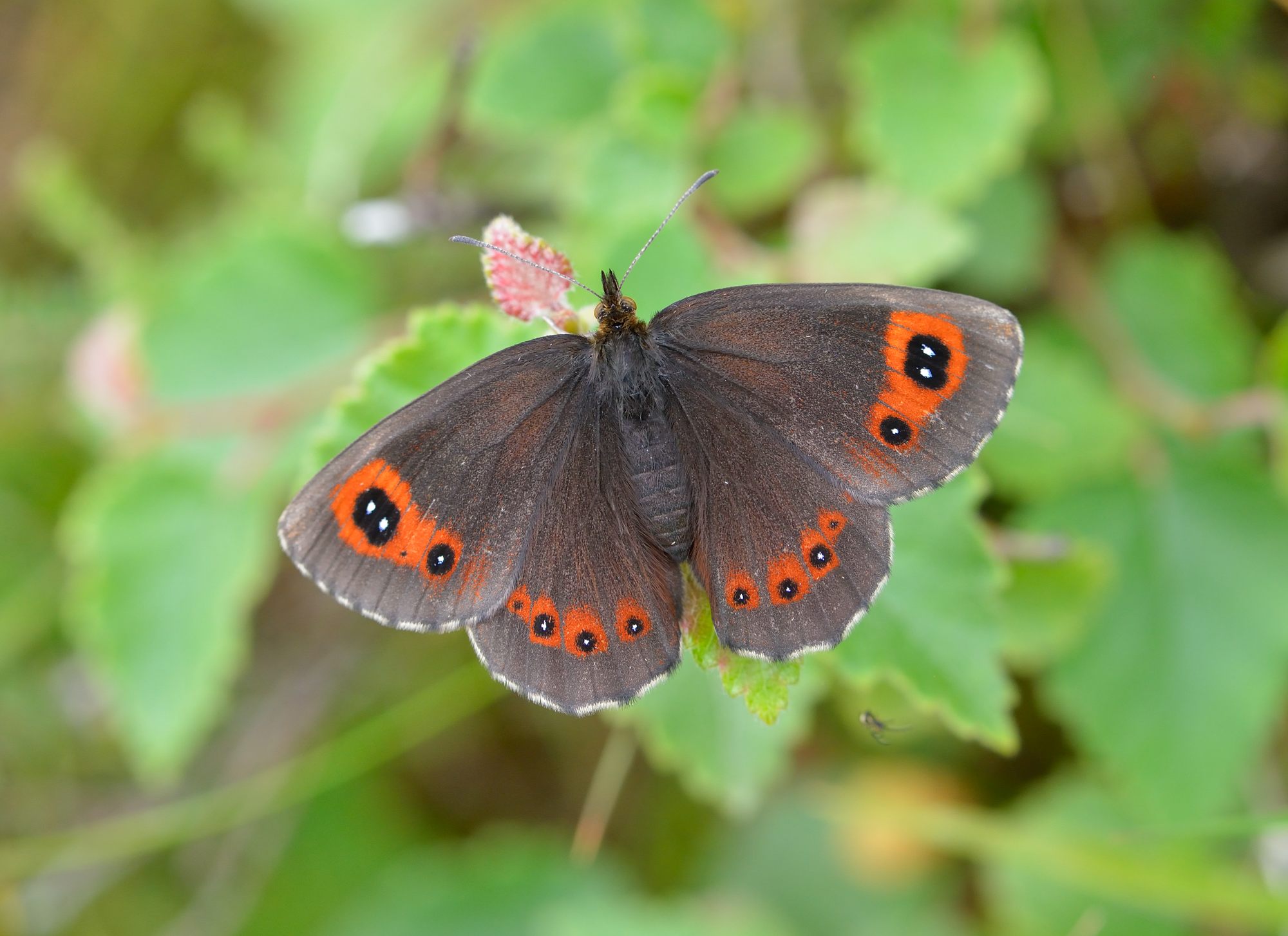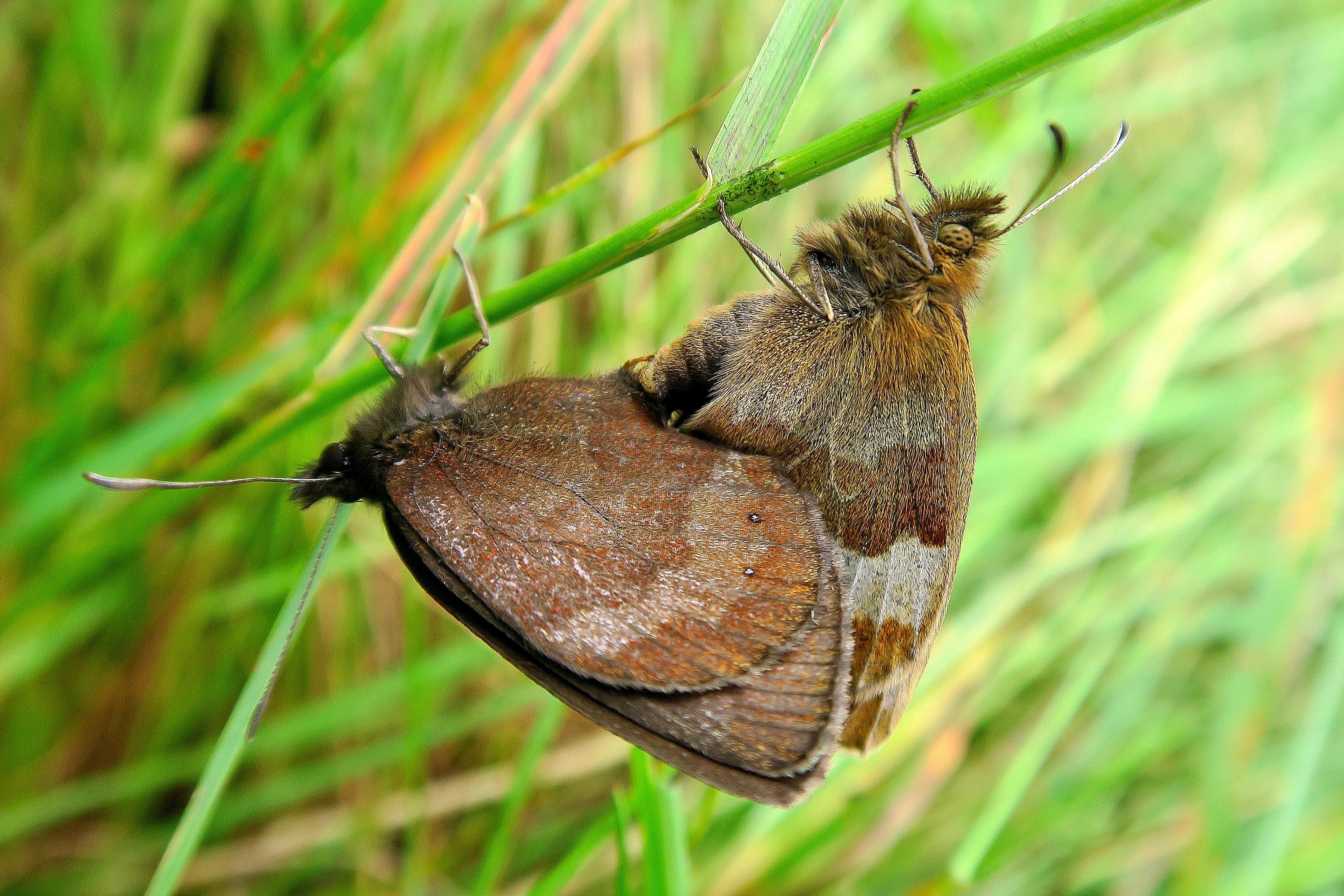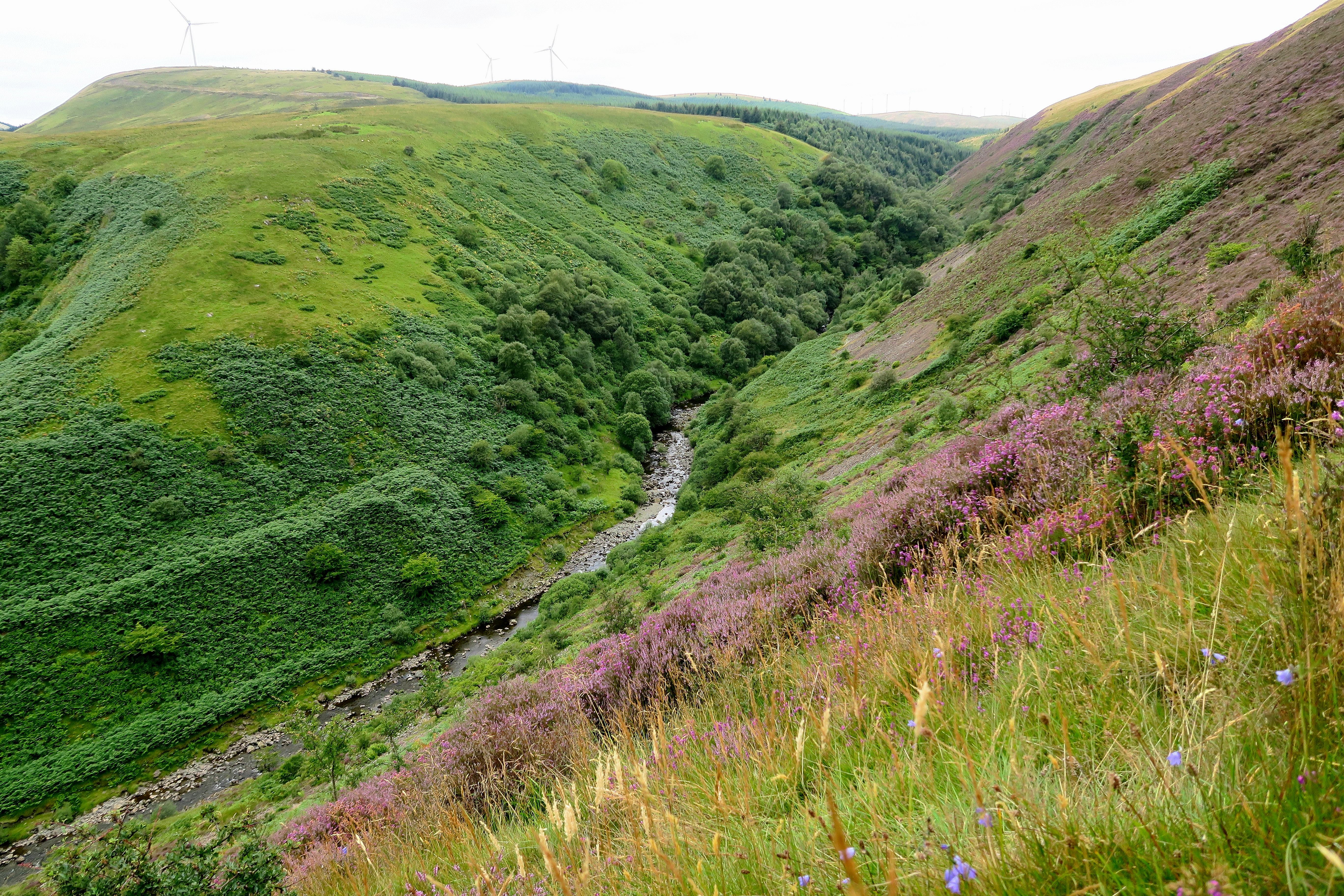The Scotch Argus can be abundant in the right habitats, but is surprisingly rare over large areas of the region. It has lost much ground in England and now only occurs in a few localities in Cumbria. As well as being intolerant of shade and grazing, climate warming and drier summers may be affecting its distribution.
Identification
When fresh, the adult Scotch Argus is a beautiful silky dark chocolate brown, sometimes with a greenish metallic sheen. They are much darker on emergence than the Meadow Brown and Ringlet, with which they could be confused, as they can fly at the same time in the same habitats. However, later in the season as they lose their scales, they can become quite pale and care then needs to be taken separating them from what can be equally pale Meadow Browns and Ringlets.
Cloudy weather usually causes Scotch Arguses to stop flying and disappear into the vegetation, but as the sun returns they rapidly rise up into the air again. Although weaker fliers than the Meadow Brown and Ringlet, in sunshine the adults can be very active.
Life cycle & flight period
The Scotch Argus has one generation a year, is the last species to emerge in the region, and has a relatively short flight period. As with many species it is the males that are first to emerge. At most sites the first adults are usually on the wing from the third week in July and can be seen until the end of August, peaking in the first week of that month. Towards the end of the flight period a few worn adults can linger into early and occasionally mid-September. Overwinters as a caterpillar deep in the base of the food plant.
The Scotch Argus often far outnumbers other species, thus the build-up and subsequent decline of adult numbers through their brief season can be rapid.
Larval foodplant
The caterpillars feed on a variety of grasses and sedges.
Habitats
The preferred habitats are tall, damp grassland and open, wet woodland. The butterfly cannot survive on grazed or mown grassland, although it can form colonies on very lightly grazed moorland. Nor does it prosper in very shady woodland, so large parts of lowland Scotland are unsuitable. The highest concentrations of butterflies seem to be associated with sheltered but sunny woodland, and herb-rich flushes, and it can be seen at over 500m. However, the Scotch Argus becomes rather scarce towards the coast.




